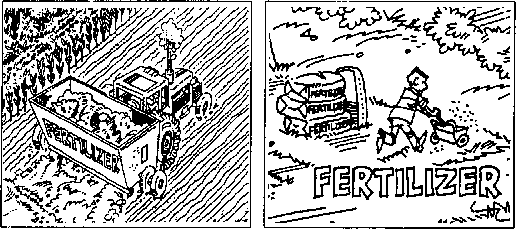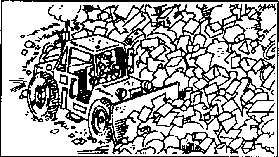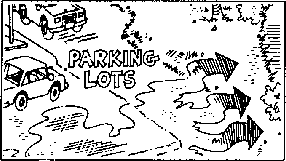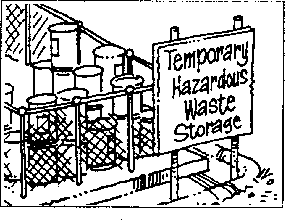| |
|
Water Quality Poster - Grade School
|
|
Nonpoint-Source Pollution

Nonpoint source means
that the pollution comes from a broad area, such as a large field that
has been covered with fertilizer or pesticides. Excessive application of
fertilizer or pesticides on agricultural lands or on lawns and gardens
can create nonpoint sources. People who use fertilizers and pesticides
must read labels to ensure that they are applying the materials properly. |
 |
A land-surface disturbance caused by humans, such as construction
or logging, can create nonpoint sources of pollution. Pollution
can occur when an increase in erosion caused by land disturbances
produces large quantities of sediment, which is washed into rivers,
streams, and lakes. Contamination can be reduced by preventing
sediment from reaching waters through the implementation of erosion-control
structures and the by planting and maintenance of soil-holding
vegetation. |
 |
Disposal of garbage and trash at community landfills has the potential
for polluting surface and ground water. Recycling of waste products
such as oil, grease, plastics, paper, and aluminum reduces the
potential for pollution from landfills. Many automobile products,
such as gasoline and brake fluid, and household chemicals like
cleaning solutions and turpentine, should not be placed in landfills
but taken to special collection areas. |
 |
Oil and grease from automobiles, sand, gravel, salt, and other
potential pollutants accumulate on parking lots and streets.
Because very little water infiltrates into asphalt and concrete,
the nonpoint-source pollutants that accumulate on them can be
washed into surface waters during large storms. Prevention of
this type of nonpoint pollution requires collection and treatment
prior to discharge into surface waters. |
Hazardous Materials
 |
Hazardous
wastes produced as byproducts of manufacturing can affect water resources.
Proper handling, storage, and disposal of hazardous
materials is critical to the prevention of their entry into surface
and ground water. This requires moving these materials to a safe
storage location. What can individuals do to stop hazardous-waste
pollution? One method is to stop dumping oil, cleaning liquids,
or unknown substances on the ground or down the drain. |
|
|
|

